Welcome to one of the most active flamenco sites on the Internet. Guests can read most posts but if you want to participate click here to register.
This site is dedicated to the memory of Paco de Lucía, Ron Mitchell, Guy Williams, Linda Elvira, Philip John Lee, Craig Eros, Ben Woods, David Serva and Tom Blackshear who went ahead of us.
We receive 12,200 visitors a month from 200 countries and 1.7 million page impressions a year. To advertise on this site please contact us.
|

|
|
Flamenco Keys
|
You are logged in as Guest
|
|
Users viewing this topic: none
|
|
Login  | |
|

   
joevidetto
Posts: 191
Joined: Jun. 15 2013

|
 Flamenco Keys Flamenco Keys
|
|
|
Recently had a lesson with Roberto - 3 thumbs up - he's an excellent teacher with a wealth of knowledge and experience.
Prior to working with Roberto, I had worked for years with another amazing flamenco teacher, Enrique Vargas (who transcribed the Paco Almoraima album and and several multi-book anthologies of flamenco music from the masters - with microscopic accuracy) - here you can find his books for sale (https://vgediciones.com/)
It occurred to me that in the transcription of flamenco music, there are some differing ways of describing the key one is in
In western music - we describe a key as beginning with a scale, and building chords using the notes in that scale - which become the 7 diatonic chords. When you play ALTERATIONS of some of those chords - are you still in the same key ? I think of it that way - you are still in the key of C, but adding color and variation with altered tones, and you must modify your diatonic scale to accomodate and prevent clashing with the colors you add. So if you plan C minor pentatonic over a diatonic progresssion in C major scale, it can work. You may not want to linger on certain notes, but it can sound really good.
The way it is approached in Enrique Varga's books (and I hope I express this correctly), is that if you want to use the western way of beginning with a particular scale and building the diatonic chords, in flamenco, the 'diatonic scale' for "por medio" is built on "A Hijaz" (A Bb C# D E F G A) - or the 5th mode of D harmonic minor. So modulations to F major (relative minor is D harmonic minor) are often used in the coplas for por medio.
Building the diatonic chords from the A hijaz scale results in 7 diatonic chords that are essentially "por medio". Now, that does not mean that some of those chords should not be changed in order to create stable flamenco progressions that resolve on A add b2 (not b9), which is so often the resolution chord in flamenco. The flamenco cadence - what 'key' is that in, and what is the 'diatonic' scale from which it is derived ? The closest is A hijaz. So for this cadence, the closest way to describe it is that 3rd diatonic chord of A hijaz is MODIFIED to C major for the sake of accomodating the Andalusian cadence. When this is done, for a moment, you must use A PHRYGIAN to avoid that clash that staying in A Hijaz with the C# would cause. Now when you use that C natural over the 3 chord - are you still in A Hijaz with an ALTERED note, or are you in A Phrygian ? With my thinking, and I believe as is consistent with the Enrique Vargas books, you are STILL in a MODE of A HIJAZ, but over that 3 chord - you should use the 'mode' of A hijaz with a flat 3rd - which can also be described as A phrygian. BUT, if you are resloving to A add b9 (which is a MAJOR chord), and NOT A minor or a variation of it, you are clearly in A Hijaz and not A phrygian - if not, what key are you in ? A phrygian is a way to describe the group of notes you use for that one chord, but you are NOT in A phrygian. You would have to be resloving to A minor to consider being in Phrigian mode. Modes, in my way of thinking, are defined by the notes they use, AND most importantly by the resolution chord (sometimes but less frequently the starting chord). And "por medio" is best described diatonically with the notes A Bb C# D E F G A, which is called "A Hijaz".
The theoretical terminology can be somewhat arbitrary and approached in different ways - but it is helpful to either have a common vocabulary, or understand what your flamenco teachers or friends mean when they use these words.
How do you think of por medio ? Does your terminlogy or way of thinking differ from that above ? How so ?
|
|
|
|
REPORT THIS POST AS INAPPROPRIATE |
Date Jan. 24 2021 15:45:26
 |
|

   
Ricardo
Posts: 14801
Joined: Dec. 14 2004
From: Washington DC

|
 RE: Flamenco Keys (in reply to joevidetto) RE: Flamenco Keys (in reply to joevidetto)
|
|
|
quote:
How do you think of por medio ? Does your terminlogy or way of thinking differ from that above ? How so ?
Unfortunately we have had massive discussions on this topic, not all of which ended very nicely. There is nothing “wrong” with what you learned and are thinking, but I feel that it is convoluting multiple disciplines and theory approaches for the sake of communication of flamenco (which has it’s own discipline and language far removed from what you describe, and never needed it to function) to people that MIGHT have knowledge of OTHER disciplines and theory such as western classical tonal music, and Jazz (again both use very different approaches and terminology). I normally find conflicts in delivering my personal view of it all simply because the people arguing are also using conflated terms and approaches with their OWN personal understanding they already had.
In other words, if you are well versed in Jazz, then I would approach flamenco with a modal concept where each chords or scale or melody is a single 13th chord and explain it as such. But if one is versed in doing harmonic analysis CORRECTLY of Bach chorales and such, using western tonal harmony, I could explain flamenco a different way. The problem I have found is the people I am talking to might not understand either of those that well, so it’s frustrating how to move forward. As and example, in one thread there was a very intelligent gentleman who insisted that the harmonic minor scale contains implications of the existence of the harmony VII natural dominant chord. For example the A harmonic minor ABCDEFG# somehow allows for the existence of a G7 chord. The very definition of the scale does not allow this, even though music that might use the harmonic minor scale might also use OTHER scales such as A natural minor, which in fact DOES use the G7...so we stand arguing about the definition and what it means “harmonic minor scale”.
It is no coincidence your own description of “hi jazz”, and your attempts to justify the C natural chord in that context is hittting the exact same rocky road, for the exact same reasons. What I have tried to do, quite simply, is to point people toward the direction of “labeling” music, or music passages, as either “tonal” as in in a “key”, OR “modal”, but not really BOTH at the same time. The entire thing is very frustrating because to me the situation is black and white, but to most others it is very “grey”. So when you ask about the outnotes and colorful harmony, there are specific situations that this addressed but you need to approach from one angle or the other. NOT BOTH at the same time. If your question was looked at from a jazz view, then the key doesn’t matter. The chords exist as stand alone modes. If it was addressed from the Tonal harmony view, then you are dealing with either a “tonicization” using secondary dominant function, OR, a “modulation”. The difference between these two would have to do with context ie...what happens NEXT or before the passage in question. That is what learning proper harmonic analysis (of Bach chorales for example) teaches you. And there exist excellent examples where the situation is deliberately ambiguous. But what is the point of going down that road if the BASIC concept is not yet understood?
Flamenco already exists in a form with it’s own terminology and methods for learning that don’t need this western type analysis. To make it worse, despite the clear tonal harmony techniques at play, EASTERN elements are always (even if superficially) present in the overall sound of flamenco. In other words, it would be possible to translate flamenco into a structure of the closest Indians ragas, talas, or the Makkams etc. But there, again, before doing that EVERYBODY needs to understand those systems at a pretty deep level in order to not translate some concept wrongly.
For your specific question about hi jazz scale and it’s chords, I would say first understand, fully, how the basic KEY OF D MINOR works and accounts for all of it’s chords and modulations and scalar melodies. The saddest of all keys, but plenty of examples to look at. Flamenco is not really operating very different than that, at least where the accidentals come in and really matter.
_____________________________
CD's and transcriptions available here:
www.ricardomarlow.com
|
|
|
|
REPORT THIS POST AS INAPPROPRIATE |
Date Jan. 24 2021 20:54:23
 |
|

   
joevidetto
Posts: 191
Joined: Jun. 15 2013

|
 RE: Flamenco Keys (in reply to joevidetto) RE: Flamenco Keys (in reply to joevidetto)
|
|
|
quote:
Isn't "Hijaz" a Middle Eastern/Arabic Maquam? Do they have harmony and chords? I often wondered why Enrique Vargas used that term for the scale. Maquam would be a third musical system in addition to Western Tonal and Jazz.
Studying with Enrique Vargas, if one reads his theory book volume 2, flamenco has a strong Maquam influence, and there are different names for groups of notes with 4 or 5 tones. Putting 2 of these groups of notes (or "ajna") together creates the flamenco modes. No, there are no chords or harmonies until we build them (and they were added later)
Originally in Maquam music, there were no chords or harmonies, just single note melodies (I can't speak for microtones, I don't know much about that aspect, other than that there are smaller and more intervals than in the western scales)
So as Maquam ideas - single note melodies, were brought into flamenco, where chords were used. In order to accompany these Maquam melodies with chords, and lay it out with western ideas of diatonic progressions, he does so by using the Maqam building blocks and creating the harmonies diatonically, then altering the chords - for stability - where necessary to accomodate the Andalusian cadence.
Here is one concrete exampe: from the "ajna" the scales are derived; here are the ajna used to create the por medio Hijaz mode, which Enrique states is the most common scale in flamenco:
HIJAZ (tetrachord) - 1/2 step, 1 and 1/2 step, 1/2 step - (A Bb C# D)
Nahawand (tetrachord) - whole step, 1/2 step, whole step (D E F G)
Maquam Hijaz - A Bb C# D E F G A
And with the other Ajna, he goes on to describe the different Flamenco modes.
So there are 7 modes in por arriba would be
A Maquam Hijaz
A Maquam Shanaz
A Maquam Kurd, etc.
A Maquam Saba ZamZam
A Maquam Saba ZamZam Extended
A Maquam Zanjaran
A Maquam Zanjaran b5
I'm wondering if anyone else has a deep understanding of Enrique's approach.
In Enrique's book, this is well-developed, well-documented, and consistent. I am not a music major, and cannot say I understand the other approaches to Flamenco. I will say that looking at a chord in isolation as it's own separate key or mode doesn't work for me (right now), and feels very disjointed. That might make a lot of sense - it could be my level of sophistication and expertise hasn't reached that point. My ear hears chords that follow each other and my mind wants at least 2 or more to belong to a key, tonal center, mode, whatever you care to call it to conceptualize the MOVEMENT. My working memory is too small to hear a bar of 4 beats as it's own key.
When I work with other teachers and players, I'd like to be able to 'speak their language" when discussing Flamenco progressions and substitutions.
If you've studied with Enrique, you will be familiar with the approach above.
So that I can speak the "same language" regarding theory with other teachers and players on this website - can you share a well-documented reference of the terminology that other teachers and advanced players use when discussing Flamenco progressions ?
CAVEAT - with a good ear, and a good teacher - all can be learned without any music theory terminology....until we care to communicate with each other and compose based on a theoretical basis
When I work with anyone else, I'd like to be sure I'm speaking the same language - otherewise, there is confusion and chaos lol...not really - but a lot of time wasted on semantics and not on playing : )
|
|
|
|
REPORT THIS POST AS INAPPROPRIATE |
Date Jan. 25 2021 1:09:03
 |
|

  
Piwin
Posts: 3559
Joined: Feb. 9 2016

|
 RE: Flamenco Keys (in reply to joevidetto) RE: Flamenco Keys (in reply to joevidetto)
|
|
|
I think this is the thread people are mentioning, if you want to read through it:
http://www.foroflamenco.com/tm.asp?m=320753&mpage=1&p=&tmode=1&smode=1&key=scales
(edit: reading Ricardo's response, apparently this isn't the thread they're referencing lol my bad ^^)
I'm sure there's plenty of value in looking into this kind of thing (and I personally enjoy these kinds of discussions), but if your purpose is really to just speak the language and communicate with flamenco players, I'd drop all of it. The common flamenco vocabulary doesn't include terms like maqam, alterations, flat 2s, 9s, 11s or whatever else. It's also not bothered with the fact that frigio doesn't perfectly line up with what that term means in other musical disciplines.
This isn't a diss on Vargas. I haven't read his book. Just that when Vargas tries to import maqams, or when Sanlucar tries to import old Greek music or whatever, it should be understood that they are proposing their own thing. It's not the norm, and certainly not needed if your purpose is just to be able to communicate with flamenco performers. I mean...if you want to avoid confusion and chaos when speaking with other flamenco performers...yeah, don't bring up maqams 
|
|
|
|
REPORT THIS POST AS INAPPROPRIATE |
Date Jan. 25 2021 11:20:06
 |
|

   
Ricardo
Posts: 14801
Joined: Dec. 14 2004
From: Washington DC

|
 RE: Flamenco Keys (in reply to joevidetto) RE: Flamenco Keys (in reply to joevidetto)
|
|
|
quote:
HIJAZ (tetrachord) - 1/2 step, 1 and 1/2 step, 1/2 step - (A Bb C# D)
The thread I think this came up in detail about makkams started as a discussion about Solfegio (edit, no I found it though). Anyway, the quote above has to be understood as a WESTERN APPROXIMATION...you don’t want to deal with micro tones but it is NO SMALL DETAIL. The reason is, the hijaz that starts on a proper “A” equivalent pitch, does not in fact use a “Bb” in the equal tempered sense. It is SHARP of that pitch. Some western minded folks would actually rather call it B natural, and if possible bend the pitch flat a hair. So the TRUE note hijaz requires, relative to an A note, does not really exist on a piano. You could cheat it on guitar by de tuning the B string for example and hearing it relative to the fretted or open A. However there is another problem....the C# is also not a C# ...it needs to be flat a hair. This one might be easier for guitar players to hear as we often detune the third of a major chord where ever it is in the voice to sweeten it up for a certain song since the equal tempered one is annoying. While that might seem like a minor grevience, the truth is in the Arab world it is a BIG deal that the distance between the “Bb” and the “C#” is much smaller than the western augmented second. The reason it is a “big deal” is because they actually use the equal tempered version notes in OTHER CASES...so the ear has to get used to the fact the micro tones are different so they are playing the CORRECT makam. (In other words you won’t need B half flat and Bb in the same makkam, but you need to know if you use one or the other, it is designed to fit a specific makam).
Next the tetra chord construction is based on a theoretical adecemic concept imposed on the systems and not an actual method for construction of makkams by musicians themselves. I frustratingly realized this during one long discussion about makkams with a guy who actually plays the stuff. So with that in mind, what Vargas is laying out (I assume) is the western equivalent modes of the D harmonic minor or mixture:
DEFGABbC#
EFGABbC#D zanjaran b5? Just a guess we need the notes.
FGABbC#DE
GABbC#DEF
ABbC#DEFG Hijaz
BbC#DEFGA
C#DEFGABb
Without knowing the equivalent note names, I am not sure which specific modes Vargas wants his reader to think important. The above is a guess, but “zanjaran vs zanjaran b5” implies mode mixture. (If my guess was correct then EFGABC#D is melodic minor mode 2 so his list would be a mode mixture).
While it is interesting to point out similarity of western modes used by flamenco to Arabic ones, it is important to understand they are superficial approximations, and dealing with equal tempered western instruments like guitars, it is a little more useful to know the modern church mode terminology. I might spend the time to look up those makkams to give the notes unless you have them already.
Read the exchanges with Mavi from here on:
http://www.foroflamenco.com/tm.asp?m=328785&mpage=3&p=&tmode=1&smode=1&key=makam
_____________________________
CD's and transcriptions available here:
www.ricardomarlow.com
|
|
|
|
REPORT THIS POST AS INAPPROPRIATE |
Date Jan. 25 2021 15:01:40
 |
|

   
joevidetto
Posts: 191
Joined: Jun. 15 2013

|
 RE: Flamenco Keys (in reply to joevidetto) RE: Flamenco Keys (in reply to joevidetto)
|
|
|
quote:
if your purpose is really to just speak the language and communicate with flamenco players, I'd drop all of it. The common flamenco vocabulary doesn't include terms like maqam, alterations, flat 2s, 9s, 11s or whatever else.
I'm very eager to learn the modern flamenco vocabulary with respect to describing the harmonies and chord progressions. Can you recommend a link, website, or pdf that would help me along with this ? I know the ear is the ultimate judge, but I'd like to be able to describe progressions using more than just the particular names of each chord, so that I can more easily remember them. Also, so I can use that theoretical basis to compose my own pieces and find new sounds rather than solely relying on my ear.
|
|
|
|
REPORT THIS POST AS INAPPROPRIATE |
Date Jan. 25 2021 16:29:05
 |
|

   
Ricardo
Posts: 14801
Joined: Dec. 14 2004
From: Washington DC

|
 RE: Flamenco Keys (in reply to joevidetto) RE: Flamenco Keys (in reply to joevidetto)
|
|
|
quote:
I'm very eager to learn the modern flamenco vocabulary with respect to describing the harmonies and chord progressions. C
His point was THE FLAMENCOS DON’T...other than solfegio. The chords are called “tonos” (Do, re, si bemol, LA, Fa, etc), the keys are named by palos (tonos de minera, por Rondeña, por granaina, por levante etc) and the rhythms are based on compas structures (por bulerias, por tangos, por tanguillo, abandolao, etc). They don’t talk or describe modes and scales other than “escalas” and when doing so refer to whatever specific scale a falseta uses and just play it, which can be ANYTHING including chromatic. Notation is not used. Transposition is often done with barres even for scales. A C scale (do) is transported to minera key by barring at 4, and it is understood as “Mi mayor” in the key of minera because that is how the cante is viewed in that form. So a flamenco doesn’t think about scales and keys in the western sense, they think “if I play the Do re mi scale from por Arriba in minera key, it’s barre 4 same exact notes”. He already knows that the cante in Minera goes to E major (Mi mayor). The Vargas book must be assuming the reader KNOWS this already if it was not explained.
The student has the option to dive in and learn the traditional way using those terms, or they can get a translation of those terms into some more common western terminology, like a Rosetta Stone of chords and scales, ASSUMING the student already has a good understanding of the terms you are trying to translate into. I assume your Vargas book was attempting to do this with makkams. But using makkams are losing something in the translation to western scale, because to do it right, half flats and such MUST be included, which simply don’t exist in the western scale. Flamenco is guitar based, and despite claims to the contrary, so is the singing, so flamenco can translate perfectly well to western nomenclature. But different disciplines use or discard portions of the nomenclature such that you need to decide how your Rosetta Stone will look...Rock jazz blues or classical? I personally would use which ever school the student is most familiar with. If none of those, then there would not be much point.
_____________________________
CD's and transcriptions available here:
www.ricardomarlow.com
|
|
|
|
REPORT THIS POST AS INAPPROPRIATE |
Date Jan. 25 2021 17:10:50
 |
|

  
Piwin
Posts: 3559
Joined: Feb. 9 2016

|
 RE: Flamenco Keys (in reply to joevidetto) RE: Flamenco Keys (in reply to joevidetto)
|
|
|
quote:
I'm very eager to learn the modern flamenco vocabulary with respect to describing the harmonies and chord progressions. Can you recommend a link, website, or pdf that would help me along with this ? I know the ear is the ultimate judge, but I'd like to be able to describe progressions using more than just the particular names of each chord, so that I can more easily remember them. Also, so I can use that theoretical basis to compose my own pieces and find new sounds rather than solely relying on my ear.
Sorry, but I can't really think of anything that would match what you're looking for. Like Ricardo said, my point was that flamencos don't usually do that kind of thing. I guess you could go try sites like flamencopolis or canteytoque. There they use scale degree notation like II-I, I-iv, that kind of thing. But even that, as helpful as it is, is not part of the common vocabulary. They'd just use the basic chord names.
quote:
Also, so I can use that theoretical basis to compose my own pieces and find new sounds rather than solely relying on my ear.
Well, that's a bit different than wanting to know the language to communicate with others. The times I've watched flamencos working on a composition, they were basically basing it all on ears and fingers. By that I just mean that it was focused on what they were hearing, and also very pragmatically on "what happens if this finger goes there" kind of thing (obviously not starting from scratch though; basing a lot of it on standard flamenco chord shapes). A process of trial and error, where they'd throw out what they didn't like and keep what they did. I don't think they were using any kind of explicit theoretical framework of the kind you're looking for. Whether that's representative of how most people do it, I have no idea.
What they did have is an understanding of the harmonic rhythm used for cante. If I could go back in time and start over, I'd probably spend less time at the beginning learning falsetas, and more time just getting really familiar with the harmonic rhythm.
Anyway, this probably isn't very helpful. I'm just saying that if I were in that place of starting to compose, I wouldn't worry all that much about the theory behind the vertical how-do-these-notes stack up aspect; I would worry more about when the chords should change so it sounds flamenco. Dunno if that makes sense.
|
|
|
|
REPORT THIS POST AS INAPPROPRIATE |
Date Jan. 26 2021 9:54:55
 |
|

   
MichaelSheridan
Posts: 14
Joined: Jan. 10 2021

|
 RE: Flamenco Keys (in reply to Ricardo) RE: Flamenco Keys (in reply to Ricardo)
|
|
|
quote:
The chords are called “tonos” (Do, re, si bemol, LA, Fa, etc), the keys are named by palos (tonos de minera, por Rondeña, por granaina, por levante etc) and the rhythms are based on compas structures (por bulerias, por tangos, por tanguillo, abandolao, etc). They don’t talk or describe modes and scales other than “escalas” and when doing so refer to whatever specific scale a falseta uses and just play it, which can be ANYTHING including chromatic. Notation is not used. Transposition is often done with barres even for scales. A C scale (do) is transported to minera key by barring at 4, and it is understood as “Mi mayor” in the key of minera because that is how the cante is viewed in that form. So a flamenco doesn’t think about scales and keys in the western sense, they think “if I play the Do re mi scale from por Arriba in minera key, it’s barre 4 same exact notes”. He already knows that the cante in Minera goes to E major (Mi mayor).
I really loved reading this. Are there any old threads that give advice on learning and internalizing this approach for those of us that weren't lucky enough to grow up in the culture? Under normal circumstances I would just try to find places where it's being played and see it live as much as possible but NYC is pretty shut down these days.
|
|
|
|
REPORT THIS POST AS INAPPROPRIATE |
Date Jan. 26 2021 13:39:02
 |
|

   
Ricardo
Posts: 14801
Joined: Dec. 14 2004
From: Washington DC

|
 RE: Flamenco Keys (in reply to MichaelSheridan) RE: Flamenco Keys (in reply to MichaelSheridan)
|
|
|
quote:
ORIGINAL: MichaelSheridan
quote:
The chords are called “tonos” (Do, re, si bemol, LA, Fa, etc), the keys are named by palos (tonos de minera, por Rondeña, por granaina, por levante etc) and the rhythms are based on compas structures (por bulerias, por tangos, por tanguillo, abandolao, etc). They don’t talk or describe modes and scales other than “escalas” and when doing so refer to whatever specific scale a falseta uses and just play it, which can be ANYTHING including chromatic. Notation is not used. Transposition is often done with barres even for scales. A C scale (do) is transported to minera key by barring at 4, and it is understood as “Mi mayor” in the key of minera because that is how the cante is viewed in that form. So a flamenco doesn’t think about scales and keys in the western sense, they think “if I play the Do re mi scale from por Arriba in minera key, it’s barre 4 same exact notes”. He already knows that the cante in Minera goes to E major (Mi mayor).
I really loved reading this. Are there any old threads that give advice on learning and internalizing this approach for those of us that weren't lucky enough to grow up in the culture? Under normal circumstances I would just try to find places where it's being played and see it live as much as possible but NYC is pretty shut down these days.
Before I went to Spain I was picking up some or most of the terminology from the Encuentro video/book series...hearing these guys talk about compas “rematar en el seis”, tuning the guitar, the techniques used, the “tonos”....Mi Fa....I was like “whoa wait minute....doe a deer a female deer, re a drop of golden sun....mi...ok got it!”. My first trip to Spain I missed the tuning change Gerardo gave us “mi bemol, la bemol, re bemol...” I thought “wow what is that? My spanish sucks!” I had to tune the guitar UNDER MY FINGERS until the chord sounded the same. Later realized how my guitar was tuned and thought, “oh he said EFlat A Flat and D flat!”....and of course working with singers early on they would say “sevillanas al tres, Mi menor”...or “al tres por Arriba...mi fa...” to be clear. Only because I was well versed in OTHER music systems did I need to TRANSLATE what I was hearing to western terminology I learned in English. But a beginner can just learn the terms from scratch which is perfectly fine.
Key relationships are based mainly on Palos (sevillanas in 3 different keys is a start, fandangos based forms constitute most of the different guitar keys showing phrygian and relative major and minor). I don’t know what books or methods do this, but the ones that try to translate to western terminology I always found lacking or failing to translate correctly the way I see it. In the end, the most efficient thing is to simply get a maestro that shows you what to do...later to accompany one needs to do that alone with dancers and singers.
At a glance, here are the guitar palos that would translate on the western circle of 5ths via key signature
(Modern key developed first by David Serva) mi bemol flamenco/Si mayor/Sol sostonido menor (5#)
Minera sol sostonido flamenco/Mi mayor/do sostonido menor (4#)
Rondeña (altered tuning montoya invention) do sostonido flamenco (Velez invention)/La mayor/Fa sostonido menor (3#)
Por Levante (Taranta) Fa sostonido flamenco/Re mayor/si menor (2#)
Por Granaina Si flamenco/Sol mayor/mi menor (1#)
Por Arriba mi flamenco/Do mayor/La menor (0#/b)
Por medio La flamenco/Fa mayor/re menor (1b)
Por abajo re flamenco/Si bemol mayor/sol menor (2b)
Believe it or not, every flamenco guitarist understands perfectly well the above system and terms...they might make enharmonic exchanges such as “La bemol flamenco” instead of sol sostonido for “minera” but the relation to major and minor is perfectly well understood. (Mi bemol flamenco is supposed to be re sostonido, but it’s rare a flamenco will make a distinction between right or wrong note spelling theory). This is all learned via trad falsetas and accompanying cante. They will also recognize that each adjacent palo (in the order I have written) utilizes the same exact scale as the neighbor excepting ONE NOTE difference, that note being the raised “cambio” note going up, or flattened cambio note going back down. (In por medio a singer sings B natural it is understood as shifting to por Arriba, and if por Arriba introduces the Bb it is understood as going to por medio). However, they certainly wouldn’t understand the overall 5ths relationship I laid out the entire system in above, nor the sequence of adding or subtracting sharps and flats over all. Only those adjacent moves are clearly understood.
Also they know very well parallel key changes on one tonic (por medio->la mayor->La menor). Modern flamenco players have also explored more than the above 8 key centers (most often a result of special tunings) and simple parallel or adjacent modulations. Modern flamenco player like vicente has no fear about say modulating from mi bemol flamenco to Granaina key and back. His solea “cordoba” moves from por Arriba to mi bemol flamenco and back.
EDIT: forgot to add that the 4 missing key centers (Sol-do-Fa-si bemol flamenco and their relative majors/minors) seems like a lot of unexplored territory (1/4 of what’s available). However, it is no coincidence most guitar based genres of music tend to avoid those same keys for the same reasons.
_____________________________
CD's and transcriptions available here:
www.ricardomarlow.com
|
|
|
|
REPORT THIS POST AS INAPPROPRIATE |
Date Jan. 26 2021 14:15:21
 |
|
 New Messages New Messages |
 No New Messages No New Messages |
 Hot Topic w/ New Messages Hot Topic w/ New Messages |
 Hot Topic w/o New Messages Hot Topic w/o New Messages |
 Locked w/ New Messages Locked w/ New Messages |
 Locked w/o New Messages Locked w/o New Messages |
|
 Post New Thread
Post New Thread
 Reply to Message
Reply to Message
 Post New Poll
Post New Poll
 Submit Vote
Submit Vote
 Delete My Own Post
Delete My Own Post
 Delete My Own Thread
Delete My Own Thread
 Rate Posts
Rate Posts
|
|
|
Forum Software powered by ASP Playground Advanced Edition 2.0.5
Copyright © 2000 - 2003 ASPPlayground.NET |
0.109375 secs.
|


 Printable Version
Printable Version





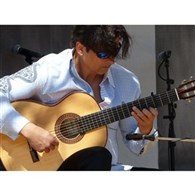


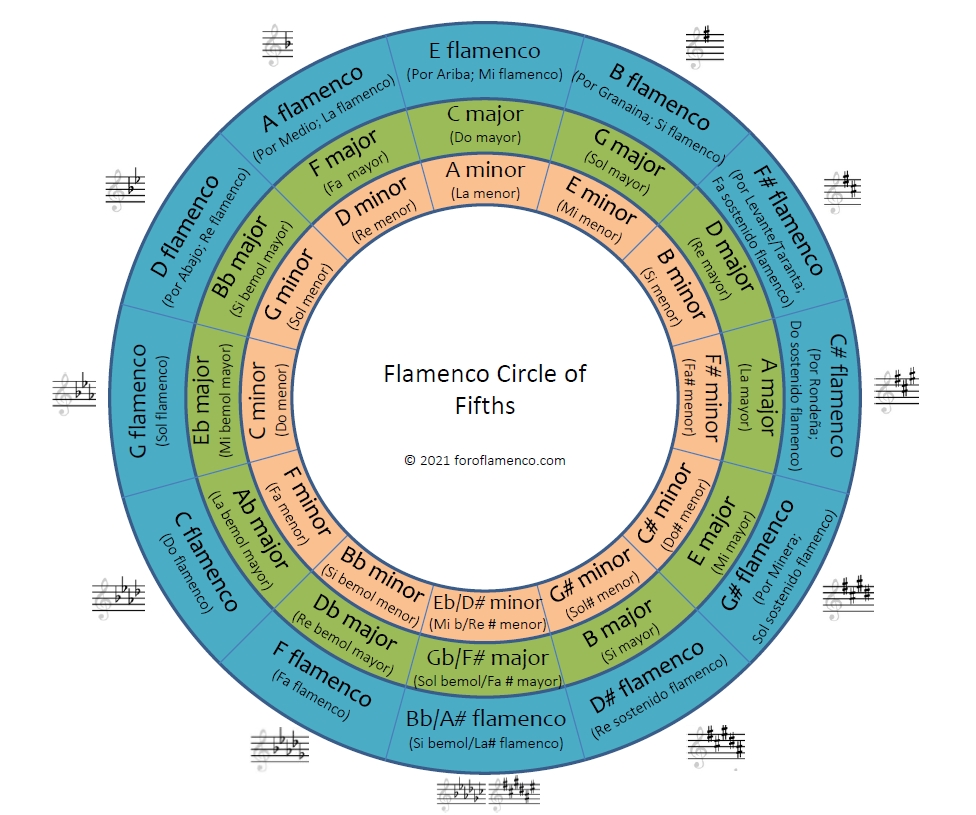

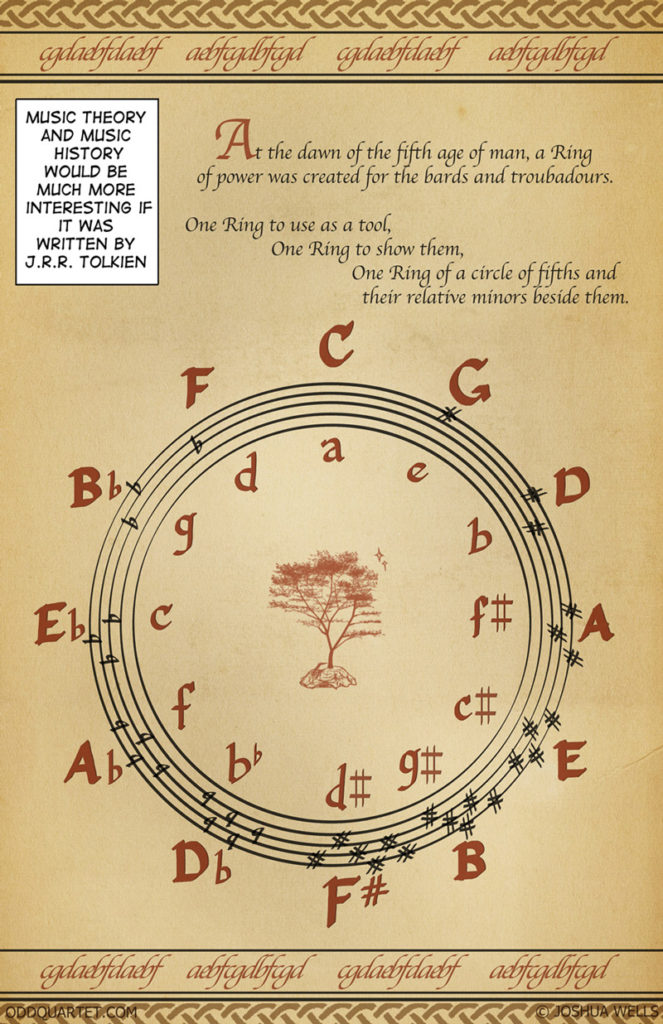
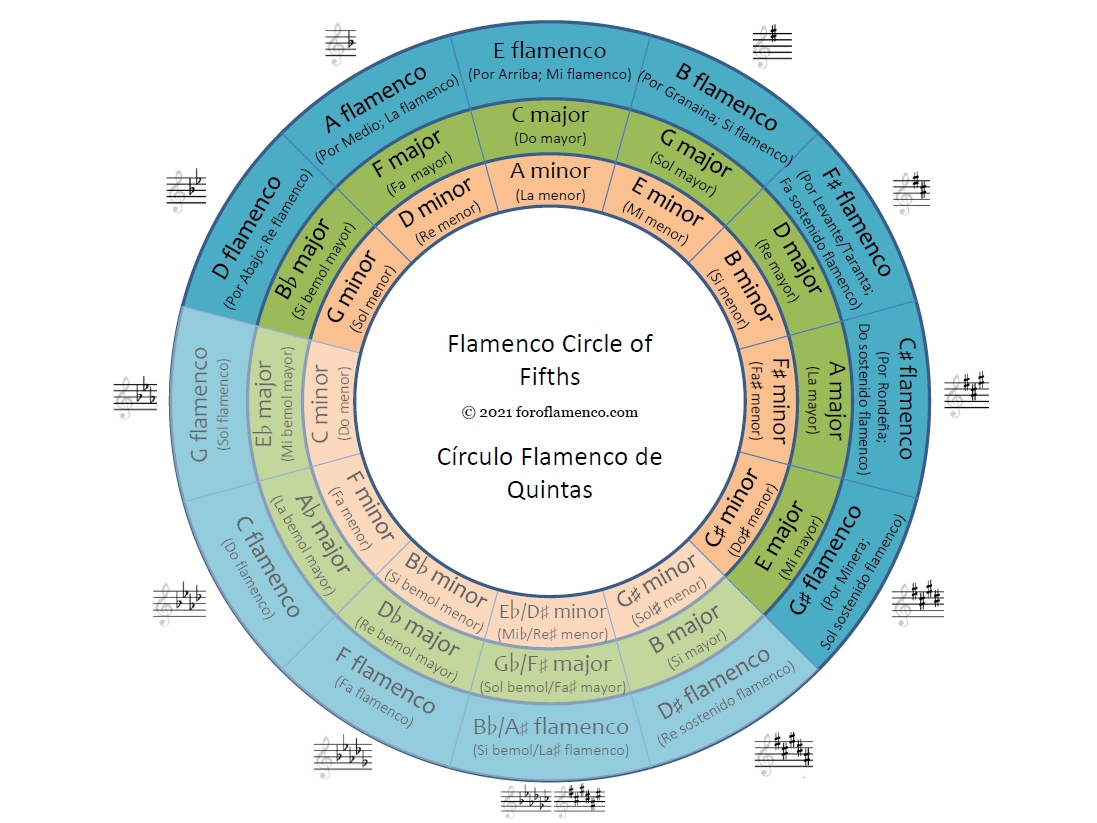
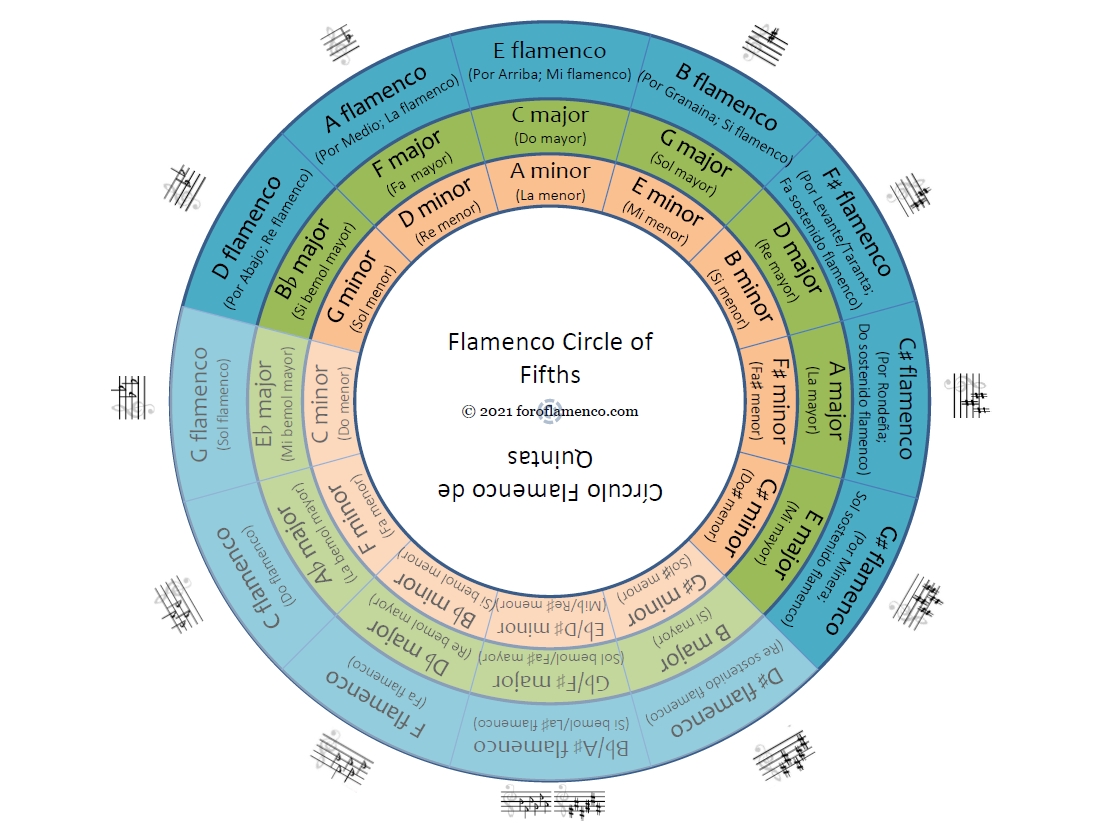
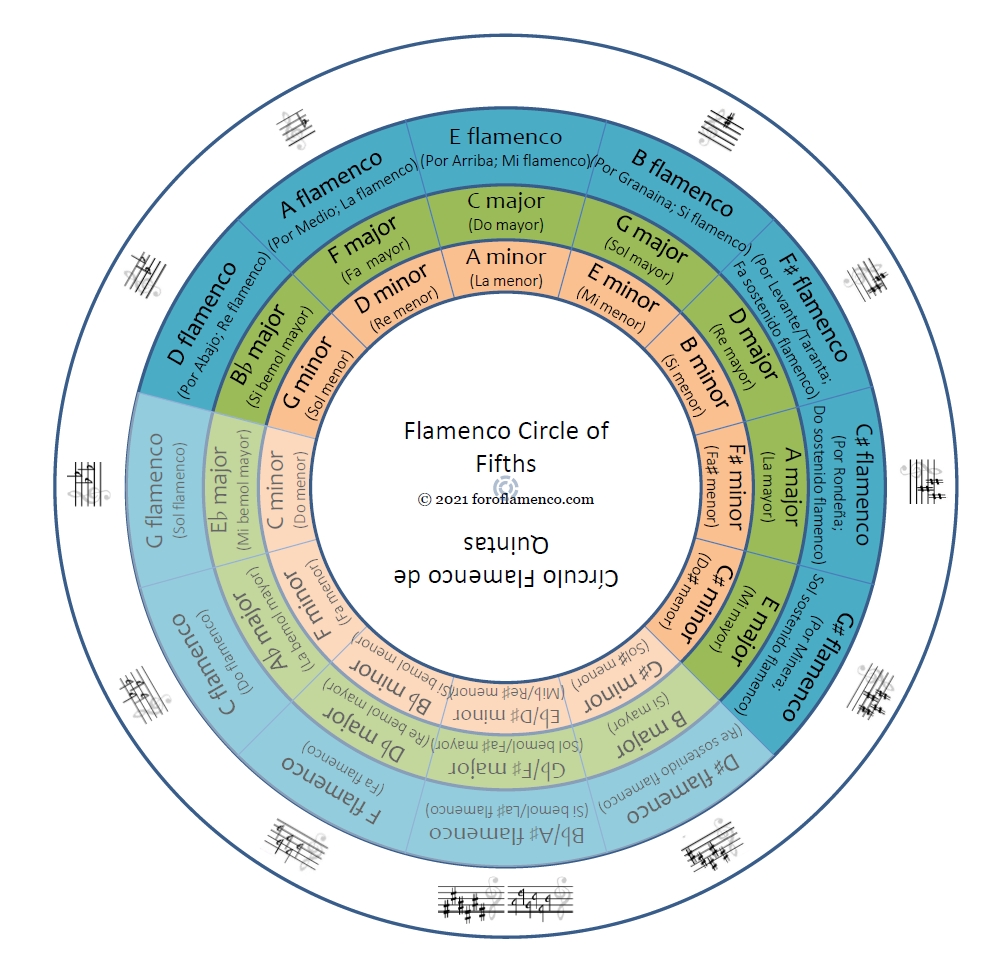
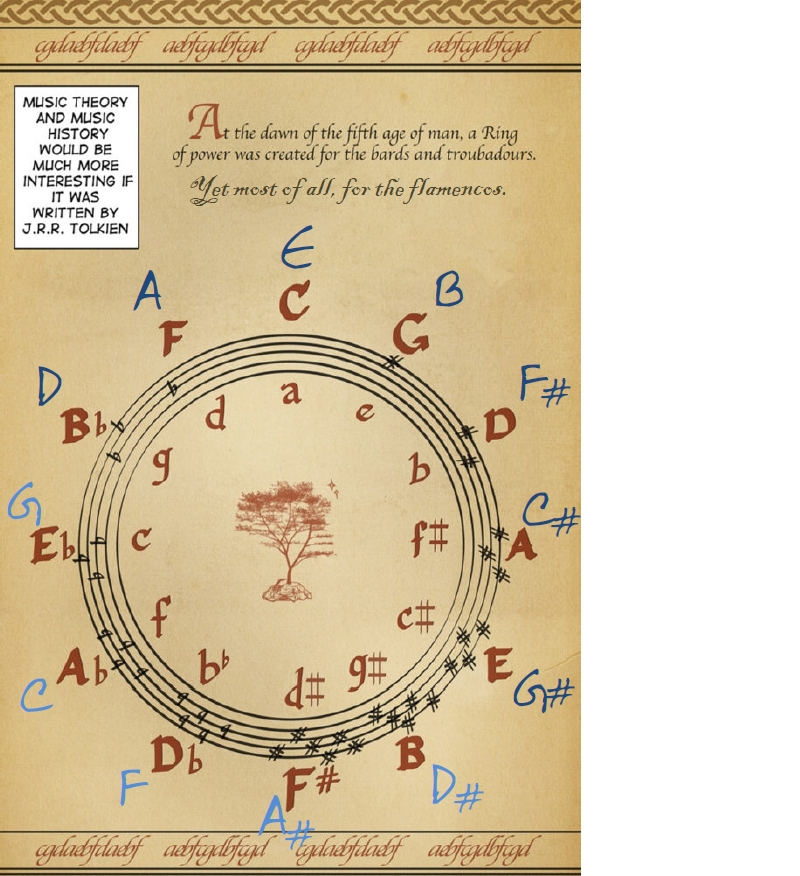
 New Messages
New Messages No New Messages
No New Messages Hot Topic w/ New Messages
Hot Topic w/ New Messages Hot Topic w/o New Messages
Hot Topic w/o New Messages Locked w/ New Messages
Locked w/ New Messages Locked w/o New Messages
Locked w/o New Messages Post New Thread
Post New Thread